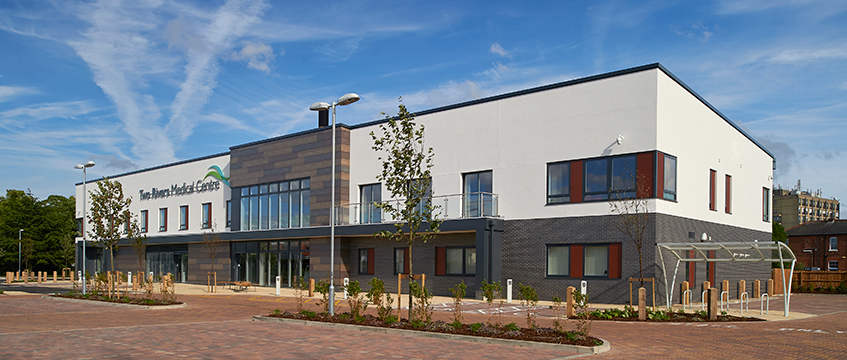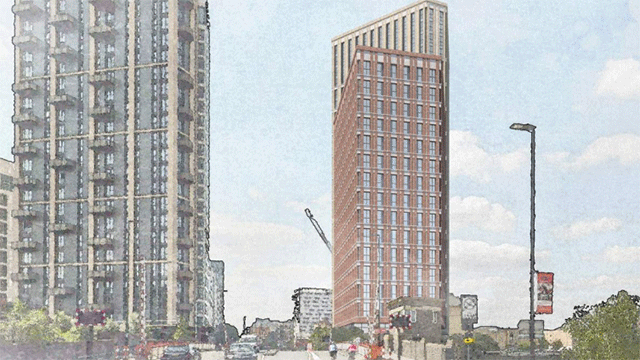In this day and age, it is tough to find a REIT so wholly unfazed by the effects of Brexit uncertainty on their shareholders – and beyond.
Harry Hyman, the founder and managing director of Primary Health Properties – and one of the key players behind the REIT’s proposed all-share merger with peer MedicX – is confident that the £2.3bn merged entity will be largely unaffected by any outcome.
“The day after Brexit, our medical centres will be full,” Hyman tells EG. “Our challenge is growth, rather than an existential challenge to what we are doing.
“Demand is not going away, as we deal with essential social infrastructure. We operate in a sector which is not driven by the economic cycle but by demographics.”
The merged business will continue to own and rent purpose-built primary care centres, with particular focus on GP surgeries, in the UK and Ireland. PHP shareholders will hold 69.4% of the company, while MedicX shareholders will take 30.6%.
Hyman says the proposals have been met with “good cross-party support” politically, both in Ireland from Fianna Fáil and Fine Gael, and in the UK from the Labour, Conservative and Liberal Democrat parties.
“We have been working on this [merger] as a theory for years, but the stars aligned and meant we could get our deal together,” Hyman says.
Scaling up
“From a combined group standpoint we hope to expand faster than either of us could on a stand-alone basis,” he continues. “The merger will create a larger entity that will be more attractive for lenders and the bond market, as well as all sorts of financing options that become available to us.
“We can pass on the benefits of lower financing costs and the other advantages of scale to our stakeholders, which include the NHS, and be an even better partner for its modernisation agenda.”
According to Hyman, there is still a significant contingent of doctors operating in the UK from what were, or are, family homes, but the added scale of the merged business would feasibly improve healthcare resources.
The merged entity will have 479 properties, including 13 in Ireland. Annual rental income will total more than £120m, with 90% of the rent roll being derived from government sources including the NHS. Pharmacy operators account for “most of the balance”.
The PHP/MedicX merger in numbers
| Combined portfolio: | £2.3bn |
| Market cap: | £1.3bn |
| LTV: | 47.8% |
| Yield: | 4.9% |
The average lease length across the combined portfolio will be 13.4 years. “It is almost unheard of to have a bankruptcy,” Hyman adds.
“In 23 years, we have had only one medical default, and that was caused by the circumstances of a single-handed GP. So this is very different from other sectors that may be more troubled.
“Unlike shopping centres or offices, we could be anywhere in London, let alone the UK. But medical centres must be where the people are, operating as locality-based social services. Almost 100% of medical centres automatically get a renewal, in our experience, providing the business is fit for purpose.”
Notably, PHP’s targeted 5.6p dividend for its current financial year would mark the REIT’s 23rd year of unbroken dividend growth.
How the businesses will combine
| PHP | MedicX | Combined/average | |
| Properties | 313 | 166 | 479 |
| Occupancy | 99.7% | 99.0% | 99.5% |
| Average WAULT (years) | 12.9 | 14.2 | 13.4 |
| Contracted rent roll | £77m | £44m | £121m |
| Average lot size | £4.8m | £4.8m | £4.8m |
The combined firm will have a 7.5% footprint in the UK healthcare market. Hyman says the firm will aim to make a “handful” of disposals after the merger. There is also “little overlap” in terms of pipelines.
“Once we digest the acquisition, we will look to divest a small number of assets where we have added as much value as we can and there may be some duplication,” he says.
Together, the firms will have £202m in firepower, underpinning the next 18-24 months of acquisition strategy.
Gearing will remain at 40-55% LTV. The funding strategy for the combined business – a combination of flexible, short-term bank facilities and longer-term insurance company borrowings – will stay the same. Aviva will lend £500m in debt to the new entity.
Meanwhile, PHP’s external manager, Nexus Group, will replace Octopus Healthcare, its MedicX equivalent.
“There are £4m in cost savings,” says Hyman, “which will inexorably lead to improvement in earnings and dividends moving forwards, when the lower financing charges we expect to realise come through.”
High demand
The merger is a key part of the overarching strategy to move healthcare away from hospitals to a locality-based, enlarged primary care setting.
In line with this, Hyman’s longer-term goal is to scale up further. “In context, we won’t be rash or precipitate about it – we want to be measured, selective and disciplined – but the demand for new primary healthcare means that £5bn of capital is required to invest in Britain,” he says.
“Similarly in Ireland, there is a requirement for a further 30-50 primary care health centres because of the same health issues as we have over here, but amplified by geography – outside of Dublin, it is very rural.”
Regionally, London and the South East have been specified as areas of “pressing need”, where site acquisition remains tricky in the face of competing policy imperatives, particularly around housing.
“Roughly speaking, you need one GP for every 2,000 people. So if you build 1,000 houses – and I think the average number of people living in a house is just under two – that’s 2,000 people that need one GP,” Hyman says.
Given this natural pairing between medical centres and housing developments, the mooted Oxford-to-Cambridge corridor, touted to develop 1m homes, was identified as one potential area for significant expansion.
The firm has also been considering diversification into adjacent sectors, although Hyman says PHP is “not ready” for these yet.
“We’ve got a big job in the primary care area, and primary care itself has actually changed in definition,” he says. He cites the growing inclusion of day-beds in medical centres as an example.

Clicks and mortar
Taking advantage of advances made in technology also plays a part in Hyman’s overall agenda to reduce pressure on NHS resources.
Hyman says: “Some sectors have their challenges, but we see the digital world as being a strong enabler. There are still a lot of medical centres in Britain where you can’t have a blood test, for example, because they do not have appropriate space. Linking up with services is another big area.
“[Technology will] enable much more to be done in primary care. We see this as being a clicks-and-mortar approach that will pay a lot of dividends in the health sector.”
By applying technology to the primary care arena away from hospitals, Hyman argues that stronger solutions for government providers are presented.
“In both the UK and Ireland, we have an ageing population, a growing population and a higher incidence of chronic disease,” says Hyman.
“What this provides for healthcare systems such as the NHS and Ireland’s Health Service Executive is a terrible dilemma, because budgets will have to go up in order to cater for this growth in demand.
“But treating people in the primary care arena out of hospital is a much better-value solution for the taxpayer.”
Confident outlook
The long-income characteristics of the merged business mean that, looking ahead, the REIT’s board will have much to feel confident about.
As essential social infrastructure, demand is demographically driven, and therefore assured.
“In the medium term, on a 20-year view, what happens to the economy is clearly important to the tax-raising powers of the country, but there is a massive national obsession with the NHS,” Hyman says.
“It is a national religion – people say it is the single most important thing about living in Britain.”
To send feedback, e-mail pui-guan.man@egi.co.uk or tweet @PuiGuanM or @estatesgazette











